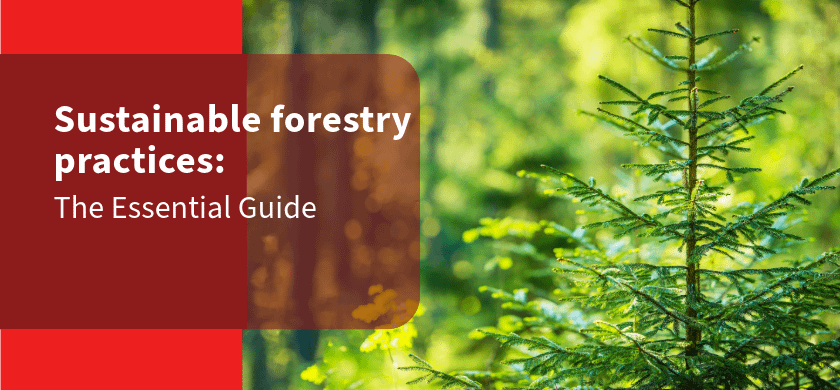Forestry practices have a significant impact on the environment and the economy. Sustainable forestry practices aim to balance the needs of the forest with those of the people who rely on it. In this guide, we will provide an overview of sustainable forestry practices and why they are essential.
What is Sustainable Forestry?
Sustainable forestry refers to the management of forests to ensure that they can continue to provide resources and ecosystem services for future generations. This involves balancing the needs of the forest with those of the people who rely on it, including timber companies, local communities, and wildlife.
Sustainable forestry practices aim to maintain the health and productivity of forest ecosystems while also supporting social and economic benefits. This means using techniques that minimize the impact on the environment, conserve biodiversity, and promote sustainable development.
Why is Sustainable Forestry Important?
Forests are essential to life on Earth. They are home to countless species of plants and animals, and they provide a range of ecosystem services that are critical to human well-being. These include clean air and water, soil conservation, climate regulation, and recreational opportunities.
Sustainable forestry practices help to ensure that forests can continue to provide these services for future generations. They also promote social and economic benefits, such as jobs, income, and cultural resources for local communities.
In addition to these benefits, sustainable forestry practices can also help to mitigate the effects of climate change. Forests absorb carbon dioxide from the atmosphere, which helps to reduce greenhouse gas emissions. Sustainable forestry practices can increase the carbon sequestration capacity of forests, which helps to mitigate the effects of climate change.
What are the Essential Sustainable Forestry Practices?
Forest Management Planning: The first step in sustainable forestry is to develop a forest management plan. This plan should consider the ecological, social, and economic values of the forest and set goals and objectives for its management.
Selective Harvesting: Sustainable forestry practices involve selective harvesting, which involves removing only a portion of the trees in a given area. This allows the forest to regenerate naturally and maintain its biodiversity.
Protecting Biodiversity: Sustainable forestry practices prioritize the protection of biodiversity. This includes protecting endangered species, preserving habitat, and maintaining ecosystem services.
Soil Conservation: Sustainable forestry practices aim to conserve soil and water resources. This involves using techniques that minimize erosion and maintain soil health.
Community Engagement: Sustainable forestry practices involve engaging with local communities to ensure that their needs are considered in forest management planning. This includes providing jobs and economic opportunities, as well as preserving cultural resources.
Monitoring and Evaluation: Sustainable forestry practices require ongoing monitoring and evaluation to ensure that the forest is being managed in a sustainable manner. This includes monitoring ecological, social, and economic indicators to assess the effectiveness of forest management practices.
Conclusion
Sustainable forestry practices are essential for maintaining the health and productivity of forests while also supporting social and economic benefits. By using techniques that minimize the impact on the environment, conserve biodiversity, and promote sustainable development, we can ensure that forests can continue to provide resources and ecosystem services for future generations. Forests are critical to human well-being and the health of the planet, and sustainable forestry practices are key to their preservation.

